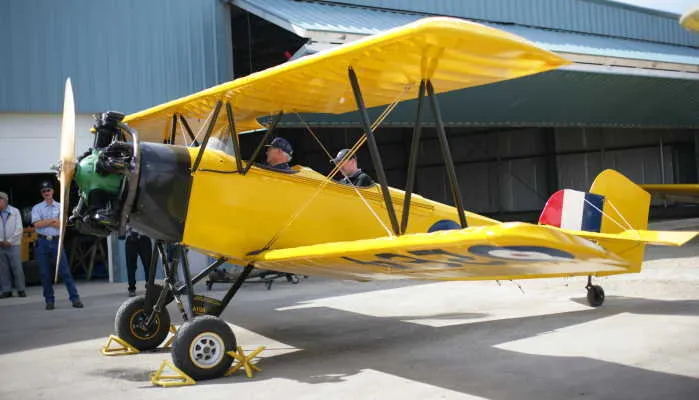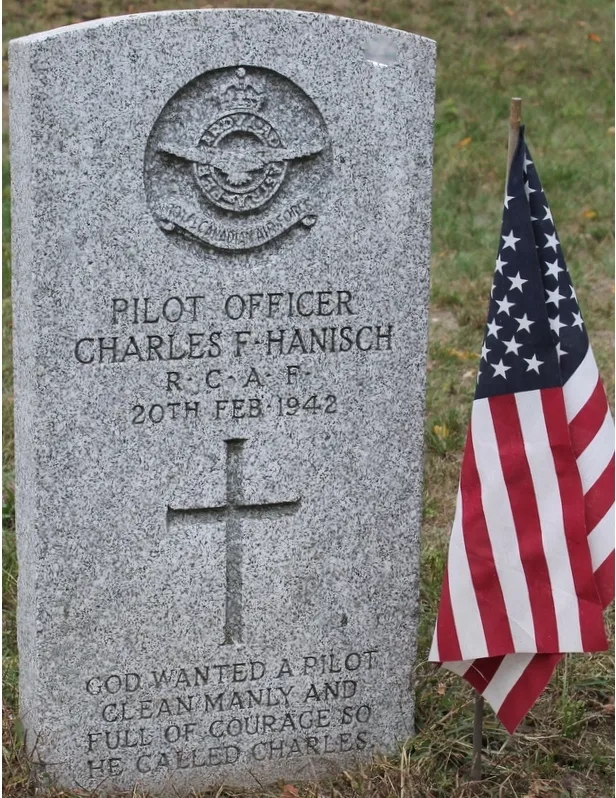Fleet Fawn

(Source Bomber Command Museum of Canada)
The Fleet Fawn first saw service with the Royal Canadian Air Force in 1931 when twenty Mk I's were delivered. Several versions of the "Fawn" design were manufactured during the 1930's, with the first Mk II (7c)'s being delivered to the RCAF in 1936. This version featured a 140 hp Armstrong Siddeley Civet seven cylinder radial engine and was soon found to be the best of the Mk II's.
A total of 71 Fawn Mk II's were built between 1931 and 1938 at the Fleet Aircraft of Canada's plant at Fort Erie, Ontario. As a two-seater primary trainer they were felt to have excellent flying characteristics together with a rugged strength which inspired confidence. The RCAF was very impressed with the Fleet Fawn and claimed that the aircraft was one of the factors which improved its flying standards during the 1930's.
The aircraft consists of a fabric-covered welded-steel fuselage with metal panels forward of the wooden cockpits. It has steel-tube fairing formers and wooden stringers. The wings are of equal spans, single bay, and wire braced. The upper wing was made in one piece and constructed with two solid spruce spars. Ailerons are found only on the bottom wings. Stamped aluminium alloy ribs were used to construct the wings and steel-tube compression struts are at the interplane and centre section of the wings. Interlaced between the wings are streamlined landing and flying wires. During the late 1930's a sliding cockpit enclosure became standard equipment of all RCAF Fawns.
Forty three Fleet Fawn trainers were operational with the Royal Canadian Air Force when war was declared in 1939. They were used primarily to train hundreds of flight instructors under the British Commonwealth Air Training Plan during the war. The Fawn remained in service with the RCAF until 1947. Bomber Command Museum of Canada
 Bomber Command Museum of Canada
Bomber Command Museum of Canada
CASPIR Aircraft Groups:
RCAF On Strength (51), RCAF 400 Squadron (1), Canadian Aircraft Losses (3)Fawn II 283
First used at Trenton with “D” Flt of FTS as of 25 Nov 1938. To Camp Borden, as of Apr 1939 with “D” Flt of ITS. Back to RCAF Stn Trenton, with FIS as of 22 Jan 1940. To Patterson & Hill in Toronto as of 19 Apr 1941. To Fleet Aircraft Ltd as of 19 Aug 1941 with 197:35 flying hours. Back No. 1 TC in Trenton as of 25 Nov 1941. Struck off, after Category "A" crash at Frankford, ON on 20 February 1942. Pilot Officer C.F. Hanisch and Pilot Officer J.D. Douglas were both killed. The a/c was on a routine training flight, which included aerobatics. The a/c was found to have crashed in an inverted position and was thought to have previously been an inverted spin.
1938-11-16 Taken on Strength 2019-08-20
1942-February-20 Accident: CENTRAL FLYING SCHOOL TRENTON Loc: Frankford Ontario Names: Douglas | Hanisch
1942-04-24 Struck off Strength reduced to spares and produce 2022-01-04





 Canadian Virtual War Memorial
Canadian Virtual War Memorial Commonwealth War Graves Commission
Commonwealth War Graves Commission Library and Archives Canada Service Files (may not exist)
Library and Archives Canada Service Files (may not exist) South Attleboro, Massachusetts, USA
South Attleboro, Massachusetts, USA

 Fleet Fawn
Fleet Fawn Wikipedia Fawn
Wikipedia Fawn Fawn - Kestrel Publications
Fawn - Kestrel Publications